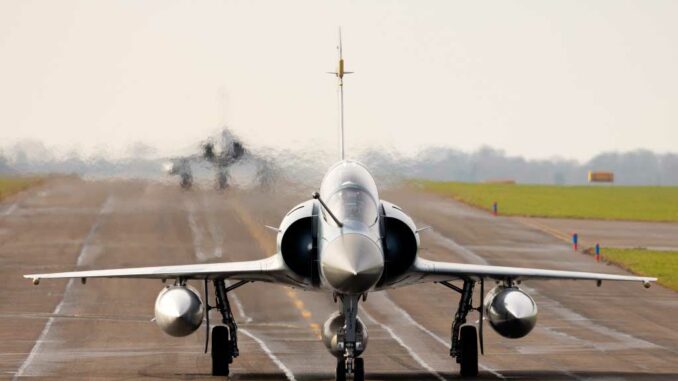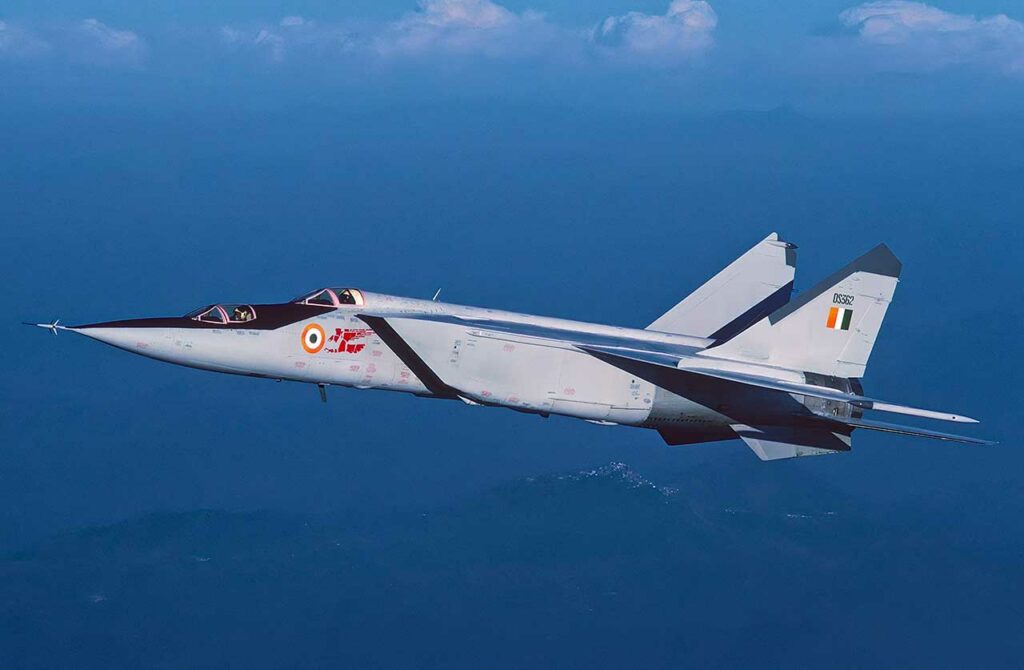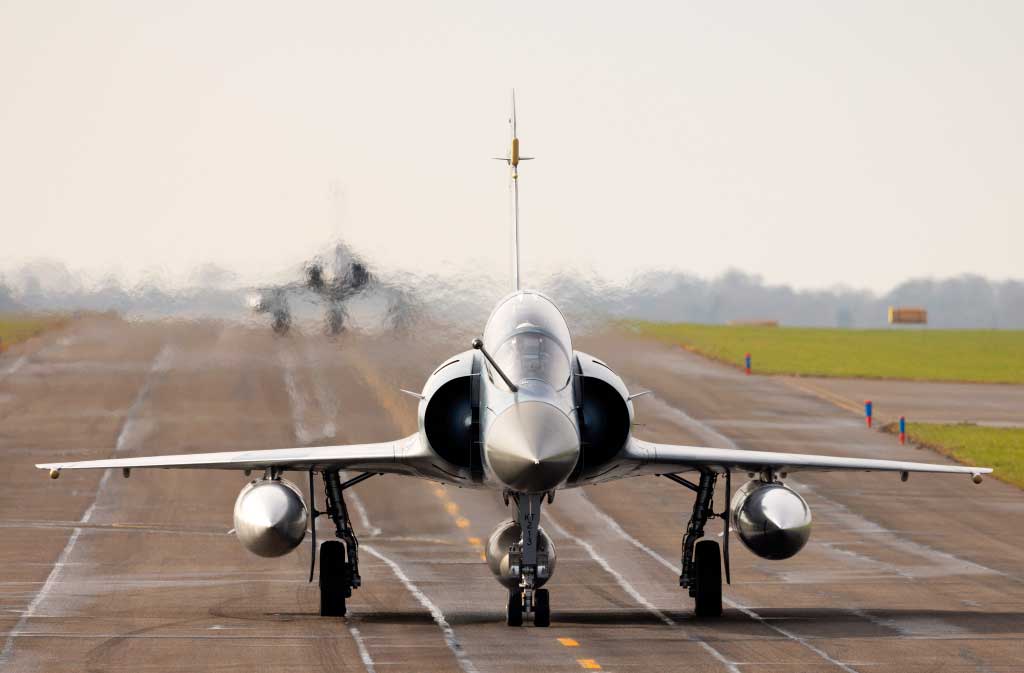
Analysis of the Indian Air Force’s evaluation process for the purchase of 114 fighter jets under the MRFA program.
The Indian Air Force’s MRFA (Multi-Role Fighter Aircraft) program is one of the largest military tenders currently underway on the international scene. The objective is to acquire 114 multi-role fighter aircraft to strengthen India’s operational capabilities in the face of persistent regional tensions, particularly with China and Pakistan. This contract, estimated at more than €18 billion, has attracted the attention of major global manufacturers: Dassault Aviation, Boeing, Lockheed Martin, Saab, Sukhoi, and Eurofighter.
This program follows on from the Rafale contract (36 aircraft delivered), but differs in its industrial dimension: more than 85% of the aircraft are expected to be produced or assembled locally. The evaluation of bids is therefore not based solely on the performance of the aircraft, but also on their overall cost, their ability to be integrated into the Indian military ecosystem, and the technology transfers offered.
In this article, we analyze in detail the technical, economic, industrial, and strategic criteria used by the Indian Air Force to compare the proposals of the various manufacturers in this complex selection process.

A rigorous strategic and technical framework
Operational requirements defined according to the regional theater
The Indian Air Force has defined very specific specifications for its future multi-role fighter aircraft. It must be able to:
- Ensure air superiority against fourth- and fifth-generation Chinese fighters.
- Carry out long-range precision strikes.
- Operate in hostile mountainous environments, particularly in Ladakh and Kashmir.
- Be interoperable with Western and Russian systems already in the Indian inventory.
These requirements impose strict technical demands in terms of AESA radar, electronic warfare, range, payload (minimum 9 tons), and avionics.
Compatibility with existing infrastructure and doctrines
The evaluation of candidates also takes into account their integratability into current doctrine and infrastructure. The Indian Air Force already operates a heterogeneous fleet (Su-30MKI, Mirage 2000, Rafale, Jaguar, MiG-29). The new aircraft must be able to coexist with these platforms without creating logistical or operational overload.
The in-flight refueling system, air-to-ground and air-to-air weapons already in stock, data link formats, and maintenance procedures are all taken into account. Bids that would require a complete overhaul of existing infrastructure are penalized.
Flight tests and technology demonstrations
Before making any purchase, the Indian Air Force requires rigorous technical testing. The aircraft are evaluated in several environments, including extreme weather conditions (the deserts of Rajasthan and the mountainous areas of Leh). Each aircraft must demonstrate:
- Its short takeoff and landing capabilities on rough runways.
- Its performance in terms of climb rate, maneuverability, endurance, and range.
- The effectiveness of its sensors and electronic countermeasures against simulated threats.
The tests have shown mixed results: the Rafale received positive evaluations for endurance and accuracy, while the F-18 stood out for its payload and connectivity.
Key industrial and economic criteria
The “Make in India” program as a political imperative
At the heart of the MRFA is “Make in India”, an industrial policy aimed at stimulating local production and reducing strategic dependence. The Indian Air Force is therefore evaluating each proposal based on its ability to:
- Set up assembly lines on Indian territory.
- Train a skilled local workforce.
- Transfer critical technologies to the Indian defense ecosystem.
- Develop a sustainable local supply chain.
Groups that partner with Indian companies such as Hindustan Aeronautics Limited (HAL) or Tata Advanced Systems significantly improve their position.
For example, Lockheed Martin is offering local manufacturing of the F-21 (a derivative of the F-16), while Dassault is highlighting its successful experience with the Rafale and Reliance Defense. The industrial cost is therefore assessed over the long term, taking into account support for the local economy.
Total cost of ownership
The analysis does not stop at the unit price of the aircraft. The Indian Air Force considers the total cost of ownership (TCO) over 30 to 40 years. This includes:
- The cost of spare parts.
- Fuel consumption (a Su-30MKI consumes nearly 9,000 liters/hour in afterburner).
- Ground crew requirements.
- Maintenance cycles.
- Flight availability rate.
Thus, an aircraft that is inexpensive to purchase but has a high logistical footprint (such as the F-15EX) may be at a disadvantage compared to a more compact aircraft that is optimized for the long term (such as the Gripen E).
Financing and offsets
Each bid also includes a financing proposal. Western manufacturers generally offer industrial offsets in the form of parallel contracts, investments, or intellectual property transfers. The Indian Ministry of Defense requires a minimum of 50% local industrial compensation for any arms contract exceeding €2 billion.

An omnipresent geopolitical and diplomatic dimension
The strategy of balancing rival blocs
India pursues a policy of balancing rival powers. It purchases both Russian (Su-30MKI, S-400) and Western (Rafale, C-17, Apache) equipment. The MRFA contract is part of this diversification strategy. The Indian Air Force must ensure that:
- Preserve India’s strategic autonomy.
- Avoid excessive dependence on a single supplier.
- Leverage diplomatic pressure to obtain the best conditions (access to technology, logistical support, lifting of ITAR restrictions in the case of the US).
Thus, the Swedish offer (Saab Gripen) could appear neutral and therefore more flexible in geopolitical terms, while the Russian and US proposals are being scrutinized for their implications in terms of strategic alignment.
The risk of extraterritorial sanctions
The US Countering America’s Adversaries Through Sanctions Act (CAATSA) complicates Russian purchases. India, already indirectly sanctioned for purchasing S-400s, must therefore factor political risk into its selection. This point is particularly sensitive for offers involving the Su-35 or MiG-35.
Regional diplomatic considerations
The choice of MRFA will send a strong signal to regional partners. The purchase of Rafale was perceived as a message of firmness to Islamabad. Similarly, a massive acquisition of Western aircraft could be interpreted as a desire to move closer to the QUAD or Western alliances in the face of China.
The Indian Air Force’s evaluation process for the MRFA contract goes far beyond a simple technical comparison between different fighter jet models. It is based on a set of complex requirements combining operational efficiency, logistical compatibility, long-term costs, industrial autonomy, and geopolitical considerations. No aircraft can claim to perfectly meet all these criteria. The evaluation is therefore based on a subtle balance between tactical performance, political acceptability, and industrial logic.
War Wings Daily is an independant magazine.